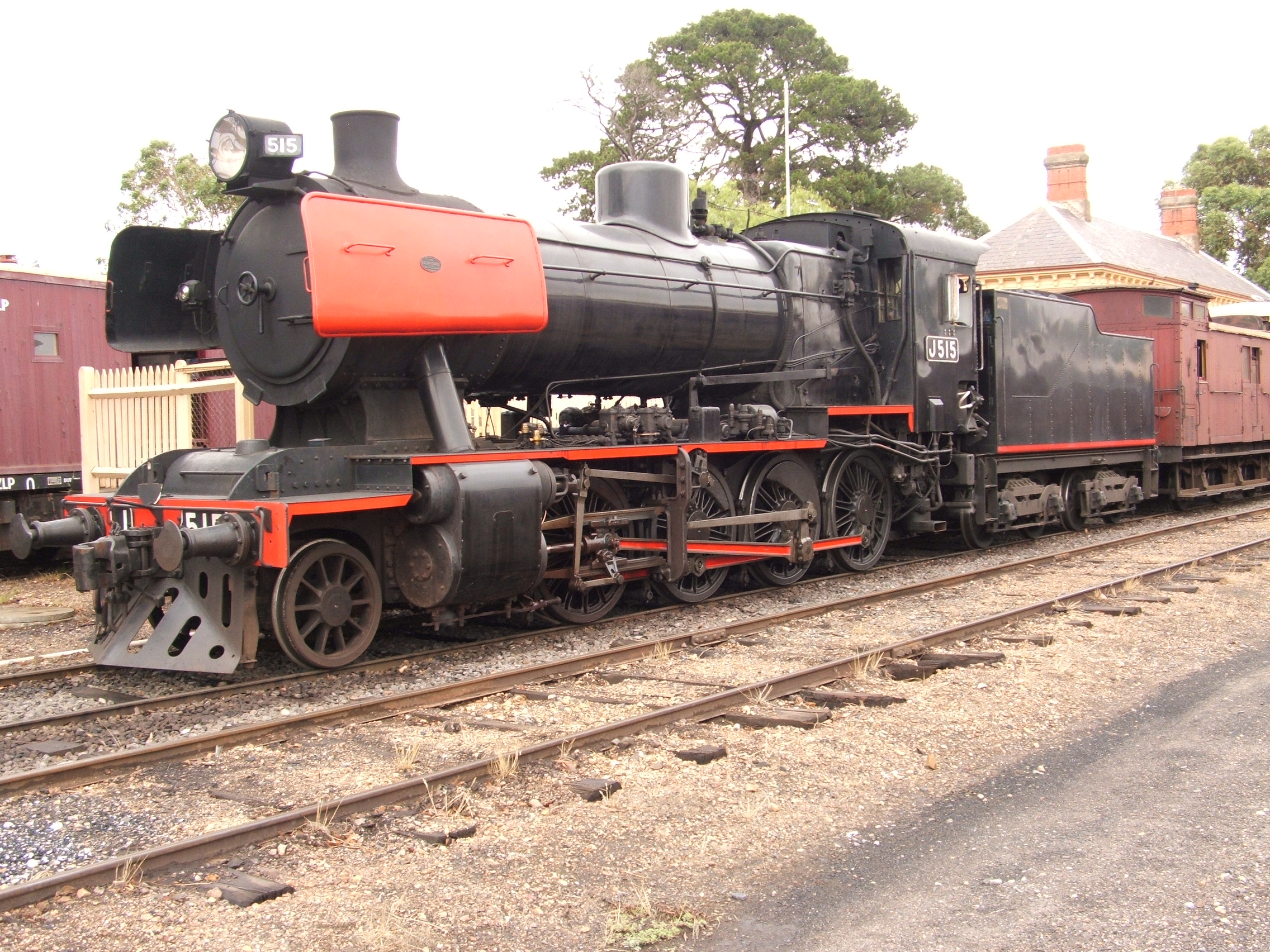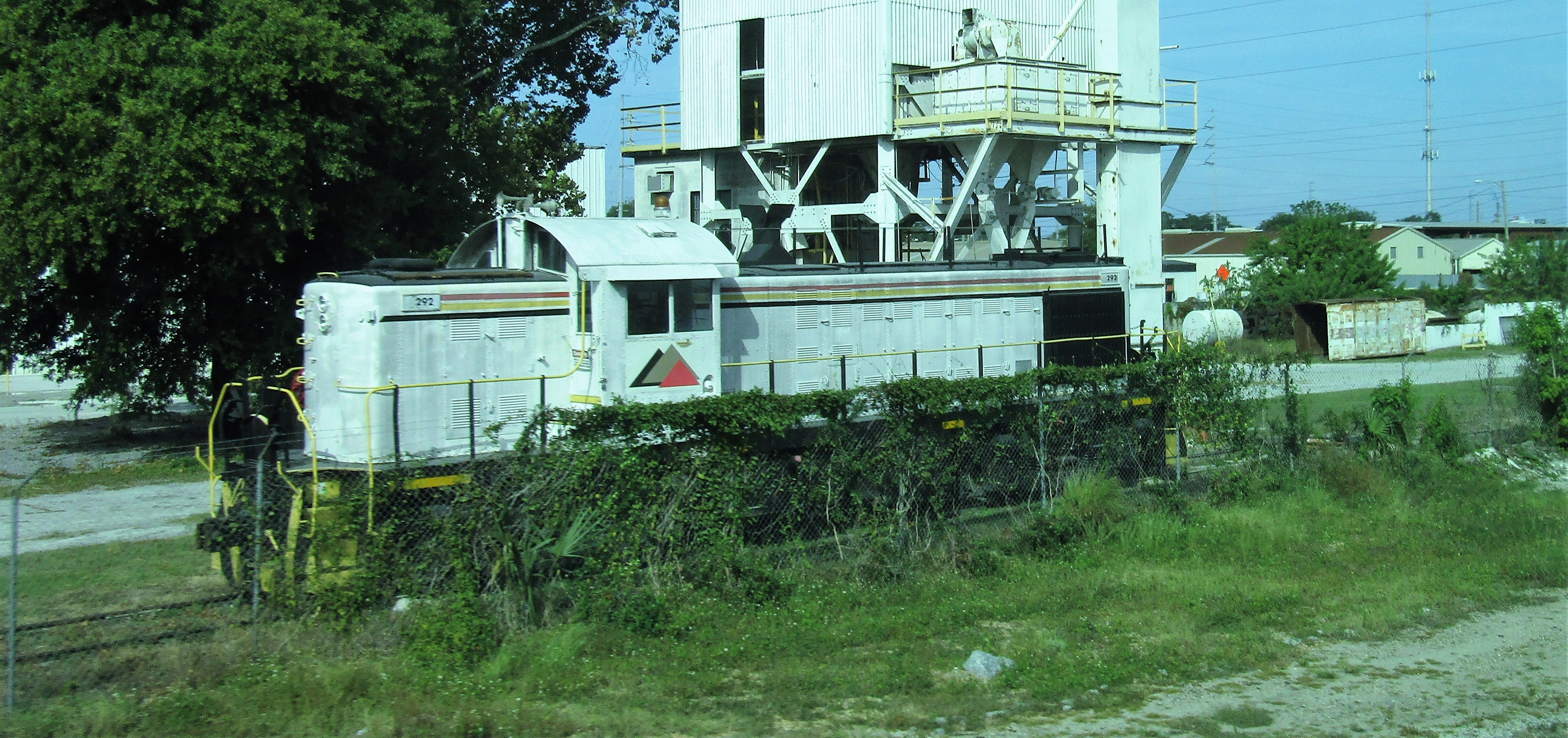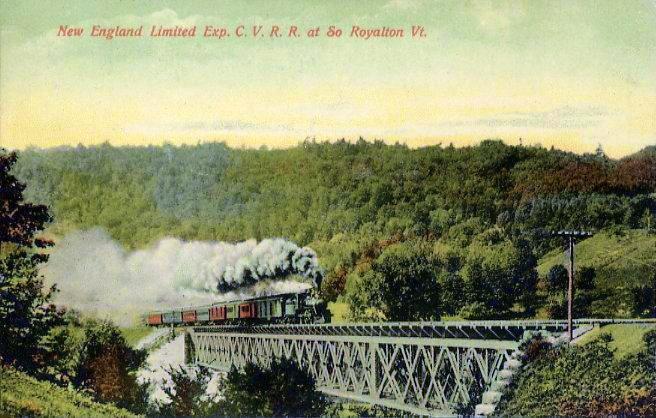|
Green Mountain Railroad
The Green Mountain Railroad is a class III railroad operating in Vermont. GMRC operates on tracks that had been owned by the Rutland Railroad and Boston and Maine Railroad. The railroad operates on a rail line between North Walpole, New Hampshire, and Rutland, Vermont. GMRC's corporate colors are green and yellow. Once owned by F. Nelson Blount, the founder of Steamtown, USA, GMRC controlled the tracks that were used for Steamtown's excursions between Riverside Station in Bellows Falls and Chester, Vermont. After Blount's death in 1967, GMRC changed hands, and a bitter relationship between the two organizations developed.Steamtown Seeks Increased Control Over Tracks Lewiston Daily News. October 5, 1976. Pg. 10 Accessed July 14, 2010
|
Vermont
Vermont () is a U.S. state, state in the New England region of the Northeastern United States. It borders Massachusetts to the south, New Hampshire to the east, New York (state), New York to the west, and the Provinces and territories of Canada, Canadian province of Quebec to the north. According to the most recent U.S. Census estimates, the state has an estimated population of 648,493, making it the List of U.S. states and territories by population, second-least populated of all U.S. states. It is the nation's List of U.S. states and territories by area, sixth smallest state in area. The state's capital of Montpelier, Vermont, Montpelier is the least populous List of capitals in the United States, U.S. state capital. No other U.S. state has a List of largest cities of U.S. states and territories by population, most populous city with fewer residents than Burlington, Vermont, Burlington. Native Americans in the United States, Native Americans have inhabited the area for abou ... [...More Info...] [...Related Items...] OR: [Wikipedia] [Google] [Baidu] |
Delaware And Hudson Railroad
The Delaware and Hudson Railway (D&H) is a railroad that operates in the Northeastern United States. In 1991, after more than 150 years as an independent railroad, the D&H was purchased by the Canadian Pacific Railway (CP). CP, which would itself become part of Canadian Pacific Kansas City in 2023, operated D&H under its subsidiary Soo Line Corporation, which also operates Soo Line Railroad. D&H's name originates from the 1823 New York state corporation charter listing "The President, Managers and Company of the Delaware & Hudson Canal Co." authorizing an establishment of "water communication" between the Delaware River and the Hudson River. Nicknamed "The Bridge Line to New England and Canada," D&H connected New York with Montreal and New England. D&H has also been known as "North America's oldest continually operated transportation company." On September 19, 2015, the Norfolk Southern Railway completed acquisition of the D&H South Line from CP. The D&H South Line is 282 mi ... [...More Info...] [...Related Items...] OR: [Wikipedia] [Google] [Baidu] |
2-8-0
Under the Whyte notation for the classification of steam locomotives, represents the wheel arrangement of two leading wheels on one axle, usually in a leading truck, eight powered and coupled driving wheels on four axles, and no trailing wheels. In the United States and elsewhere, this wheel arrangement is commonly known as a Consolidation, after the Lehigh and Mahanoy Railroad’s ''Consolidation'', the name of the first 2-8-0.White, John H. Jr. (1968). ''A history of the American locomotive; its development: 1830-1880''. New York: Dover Publications, p. 65. The notation 2-8-0T indicates a tank locomotive of this wheel arrangement, the "T" suffix indicating a locomotive on which the water is carried in side-tanks mounted on the engine rather than in an attached tender (rail), tender. The Consolidation represented a notable advance in locomotive power. After 1875, it became "the most popular type of freight locomotive in the United States and was built in greater quantities tha ... [...More Info...] [...Related Items...] OR: [Wikipedia] [Google] [Baidu] |
Rahway Valley 15
Rahway Valley Railroad No. 15 is a 2-8-0 "Consolidation" type steam locomotive, built by the Baldwin Locomotive Works in June 1916 as Oneida and Western Railroad No. 20 under Baldwin's model of 10-34-E. As of 2023, the locomotive is on display at Steamtown National Historic Site. History In 1926, 20 suffered freeze damage to its bridges when a hostler accidentally left it outside overnight, necessitating its return to Baldwin for repairs. While at Baldwin, 20's slide valve cylinders were replaced with piston valve cylinder 20 was sold to the Rahway Valley Railroad in 1937 and renumbered to 15. It last ran in revenue service in November 28, 1953 before being replaced by #17 a GE 70-ton switcher. The President of the Railroad, George Clark, did not wish to see No. 15 scrapped however. It was placed in heated undercover storage pending further development for the next six years; at one point it was hoped the engine would be put on public display in Kenilworth, New Jersey, but sp ... [...More Info...] [...Related Items...] OR: [Wikipedia] [Google] [Baidu] |
EMD GP9
The EMD GP9 is a four-axle diesel-electric locomotive built by Electro-Motive Diesel, General Motors' Electro-Motive Division between 1954 and 1963. The GP9 succeeded the EMD GP7, GP7 as the second model of EMD's General Purpose (GP) line, incorporating a new sixteen-cylinder (engine), cylinder engine which generated . This locomotive type was offered both with and without control cabs; locomotives built without control cabs were called GP9B locomotives. The GP9 was succeeded by the similar but slightly more powerful EMD GP18, GP18. Design and production EMD designed the GP9 as an improved version of the GP7, with an increase in power from 1,500 hp to 1,750 hp, and a change in prime mover to the latest version of the EMD 567, 567 engine, the 567C. Externally, the GP9 strongly resembled its predecessor. Most were built with high short hoods, but the Southern Pacific Transportation Company, Southern Pacific ordered a number with low short hoods for improved crew visibility. EMD b ... [...More Info...] [...Related Items...] OR: [Wikipedia] [Google] [Baidu] |
American Locomotive Company
The American Locomotive Company (often shortened to ALCO, ALCo or Alco) was an American manufacturer that operated from 1901 to 1969, initially specializing in the production of locomotives but later diversifying and fabricating at various times diesel generators, automobiles, steel, tanks, munitions, oil-production equipment, as well as heat exchangers for nuclear power plants. The company was formed by the merger of seven locomotive manufacturers and Schenectady Locomotive Works, Schenectady Locomotive Engine Manufactory of Schenectady, New York. A subsidiary, American Locomotive Automobile Company, designed and manufactured automobiles under the Alco brand from 1905 to 1913. ALCO also produced nuclear reactors from 1954 to 1962. After World War II, Alco closed all of its manufacturing plants except those in Schenectady and Montreal. In 1955, the company changed its name to Alco Products, Incorporated. In 1964, the Worthington Corporation acquired the company. The company wen ... [...More Info...] [...Related Items...] OR: [Wikipedia] [Google] [Baidu] |
ALCO RS-1
The ALCO RS-1 is a 4-axle diesel-electric transmission, diesel-electric locomotive built by Alco-GE between 1941 and 1953 and the American Locomotive Company from 1953 to 1960. ALCO subsidiary Montreal Locomotive Works built an additional three RS-1s in 1954. This model has the distinction of having the longest production run of any diesel locomotive for the North American market. The RS-1 was in production for 19 years from the first unit Rock Island #748 in March 1941 to the last unit National of Mexico #5663 in March 1960. Design In 1940, the Rock Island Railroad approached ALCO about building a road switcher locomotive, for both road and switching service. To meet the Rock Island's request, ALCO created the RS-1. Their new design was a hood unit, in contrast to most existing locomotive designs at the time which were predominantly cab unit, carbody units. The hood unit design allowed for improved visibility, especially to the rear. Rear visibility is very important for Shunti ... [...More Info...] [...Related Items...] OR: [Wikipedia] [Google] [Baidu] |
Electro-Motive Diesel
Electro-Motive Diesel (abbreviated EMD) is a brand of diesel-electric locomotives, locomotive products and diesel engines for the rail industry. Formerly a division of General Motors, EMD has been owned by Progress Rail since 2010. Electro-Motive Diesel traces its roots to the Electro-Motive Engineering Corporation, founded in 1922 and purchased by General Motors in 1930. After purchase by GM, the company was known as GM's Electro-Motive Division. In 2005, GM sold EMD to Greenbriar Equity Group and Berkshire Partners, and in 2010, EMD was sold to Progress Rail, a subsidiary of the heavy equipment manufacturer Caterpillar Inc., Caterpillar. Upon the 2005 sale, the company was renamed to Electro-Motive Diesel. EMD's headquarters and engineering facilities are based in McCook, Illinois, while its final locomotive assembly line is located in Muncie, Indiana. EMD also operates a traction motor maintenance, rebuild, and overhaul facility in San Luis Potosí City, San Luis Potosí, Mexico ... [...More Info...] [...Related Items...] OR: [Wikipedia] [Google] [Baidu] |
EMD GP40
The EMD GP40 is a 4-axle diesel-electric locomotive built by General Motors' Electro-Motive Division between November 1965 and December 1971. It has an EMD 645E3 16-cylinder engine generating . The GP40 is longer than its EMD 567D3A-engined predecessor, the GP35, and distinguished visually by its three 48-inch radiator fans at the rear of the long hood, while the GP35 has two large fans and a smaller one in between. It was built on a frame; the GP35 was built on a frame - as was the GP7, 9, 18, and 30. The difference in length can be seen in the GP40's ten handrail stanchions compared to the GP35's nine. 1,187 GP40s were built for 28 U.S. railroads; 16 were built for one Canadian carrier, Canadian National; and 18 were built for two Mexican carriers, Ferrocarril Chihuahua al Pacífico and Ferrocarriles Nacionales de México. 60 units were built with high-short-hoods and dual control stands for Norfolk & Western Railway. Two passenger versions, the GP40P and GP4 ... [...More Info...] [...Related Items...] OR: [Wikipedia] [Google] [Baidu] |
Vermont Railway
The Vermont Railway is a shortline railroad in Vermont and eastern New York (state), New York, operating much of the former Rutland Railway. It is the main part of the Vermont Rail System, which also owns the Green Mountain Railroad, the Rutland's branch to Bellows Falls, Vermont, Bellows Falls. The trackage is owned by the Vermont Agency of Transportation except in New York, where VTR operates a line owned by the Boston and Maine Corporation. The rail line employs about 150 people in Vermont. History The Rutland Railway was the only north-south line through western Vermont. A Strike action, strike in 1953 precipitated the company's ending passenger service. Another strike shut down freight operations on September 25, 1961. The government of Vermont purchased the main line south of Burlington, Vermont, Burlington, as well as a branch to Bennington, Vermont, Bennington, total, and the new Vermont Railway, incorporated on October 25, 1963, began operations on January 6, 1964.Edward ... [...More Info...] [...Related Items...] OR: [Wikipedia] [Google] [Baidu] |
Central Vermont Railroad
The Central Vermont Railway was a railroad that operated in the U.S. states of Connecticut, Massachusetts, New Hampshire, New York, and Vermont, as well as the Canadian province of Quebec. It connected Montreal, Quebec, with New London, Connecticut, using a route along the shores of Lake Champlain, through the Green Mountains and along the Connecticut River valley. It also connected Montreal to Boston, in eastern Massachusetts, through a junction with the Boston and Maine Railroad at White River Junction, Vermont. History The Vermont Central Railroad was chartered October 31, 1843, to build a line across the center of Vermont, running from Burlington on Lake Champlain east to the capital Montpelier, and then southeast and south to Windsor on the Connecticut River. Initial plans had the main line running through Montpelier. However, due to the difficulty of building through the Williamstown Gulf, a narrow valley south of Barre, Vermont, and to land interests of Charles Paine ... [...More Info...] [...Related Items...] OR: [Wikipedia] [Google] [Baidu] |
New England Central Railroad
The New England Central Railroad is a regional railroad in the New England region of the United States. It began operations in 1995, as the successor of the Central Vermont Railway (CV). The company was originally a subsidiary of holding company RailTex before being purchased by RailAmerica in 2000. In 2012, the company was purchased by Genesee & Wyoming, its current owner. The New England Central Railroad main line runs from New London, Connecticut, to Alburgh, Vermont, at the Canada–US border, a distance of . As of 2024, it has a total track length . Primary sources of traffic include lumber, metals, chemicals, and crushed stone. History Background and CN divestment The Central Vermont Railway (CV) had long been owned and operated by Canadian railroads, first the Grand Trunk Railway and from 1927 the Canadian National Railway (CN); CN was in turn owned by the government of Canada. The Central Vermont's owners kept it a separate company, complete with its own fleet ... [...More Info...] [...Related Items...] OR: [Wikipedia] [Google] [Baidu] |




